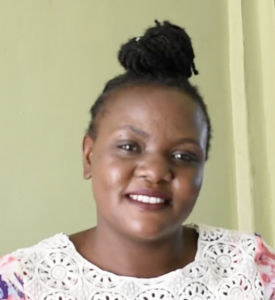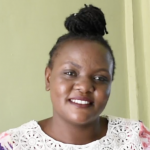It's 6:00 am, and the 571 students and 17 teachers are already streaming into Petros Primary School. By 7:00 am, when enough pupils have gathered, the teachers give the group their first assignment of the day - but it has nothing to do with learning. Instead, the first task every day at Petros Primary School is securing enough water to meet the morning's drinking and cooking needs.
Depending on the time of year, this morning routine changes according to which water sources are currently available to the school. There is a hand-dug well on campus with a pump, but the well was not dug very deep into the earth. That means during the dry seasons, the well dries up, and students have to look for water elsewhere. The school has to share the well with the community anyway - attempts to secure the well for the school's sole use resulted in vandalism from community members trying to access it. So, when there is water, students are at odds with community members - and sometimes their own parents - who also need to collect water.
Additionally, the well has a large hole in the cement that leads straight from the ground down to the water. The school recently placed some bricks over the hole, but the well is still not sealed. The water, as a result, is contaminated from the surface water, dirt, and anything else from the ground that falls into the well.
When there is no water in the well, students have to come to school carrying water from home to start their school day.
"When the water at the school dries, we are forced to carry water from home every morning. It is tiresome to carry water and books at the same time. Sometimes, we become sick because of drinking dirty water at school," said student Hellen.
Students' "home" water can come from many sources, including puddles or even the large and muddy River Lusumu that runs through the community. Students sometimes choose these dirty sources simply because they are on the road to school, lessening their burden and helping them get to class on time. Even if some students collected clean and safe water, their dirty containers could contaminate it. And, because water is combined for use at school, even one contaminated source means everyone can suffer.
"Being the head of the school, I have to handle the cases of student illnesses by taking the student to the hospital, and that is too expensive because the parents say that the child has fallen sick on the school grounds, so the school has to cater to the treatment of the child. Learning is being interfered with when students waste time fetching water, and that has made the school performance drop," explained Headteacher Tom C. Kipyeko.
Morning is not the only time students are sent out for water. During the lunch break, teachers have to send students back out to fetch more water for afternoon use. On Fridays, the school tries to maintain a general cleaning routine, which is hindered by the lack of water and can take a long time. This eats into the remedial classes the school holds in the evening.
As Headteacher Kipyeko said, with all the time and energy students waste on fetching water each school day, their academic performance worsens. Frequent cases of diarrhea and stomachaches from drinking the water at school drive absenteeism, exacerbating these issues and draining both the school and parents of their financial resources.
It is time for a change at Petros Primary School.
What We Can Do:
Rain Tank
A 75,000-liter rainwater catchment tank will help alleviate the water crisis at this school. The school will help collect the needed construction materials such as sand, bricks, rocks, and water for mixing cement. We will complement their materials by providing an expert team of artisans, tools, hardware, and the guttering system. Once finished, this tank will begin catching rainfall used by the school’s students and staff for drinking, handwashing, cooking, cleaning, and much more.
The school and we strongly believe that all of these components will work together to improve standards at this school, which will help lead to better student academic performance and unlock the potential for these students to live better, healthier lives.
Handwashing Stations
There is currently nowhere for students to wash their hands after using the latrines or before eating lunch, let alone the water.
The student health club will oversee the 2 new handwashing stations we will provide and ensure they are kept clean and in working condition. The club leaders will fill the handwashing stations with water daily and make sure they are always supplied with a cleaning agent such as soap or ash.
VIP Latrines
We will construct 2 triple-door latrine blocks using local materials that the school will help gather. 3 doors will serve the girls, while the other 3 will serve the boys. These new latrines will have cement floors designed to be easy to use and clean. And with a rain tank right on school property, there should be enough water to keep them clean.
Training on Health, Hygiene, COVID-19, and More
We will hold a 1-day intensive training session with students, teachers, and parents. This training will cover a wide range of topics, including COVID-19 symptoms, transmission routes, prevention; personal and environmental hygiene; and the operation and maintenance of the rain tank, latrines, and handwashing stations. There will be a special emphasis on handwashing.
Our team of facilitators will use various methods to train, including participatory hygiene and sanitation transformation and asset-based community development. We will initiate a student health club, which will prepare students to lead other pupils into healthy habits at school and home. We will also lead lectures, group discussions and provide illustrative handouts to teach health topics and promote good hygiene practices within the school, including handwashing and water treatment. We will then conduct a series of follow-up training before transitioning to our regularly scheduled support visits throughout the year.

 Rainwater Catchment
Rainwater Catchment
 Rehabilitation Project
Rehabilitation Project

















 Then, we cleared the site by excavating the soil to make level ground for the tank foundation. We cast the foundation by laying big stones on the level ground and reinforcing them using steel wire, concrete, and waterproof cement. We affixed both the drawing pipe and the drainage pipe as we laid the foundation.
Then, we cleared the site by excavating the soil to make level ground for the tank foundation. We cast the foundation by laying big stones on the level ground and reinforcing them using steel wire, concrete, and waterproof cement. We affixed both the drawing pipe and the drainage pipe as we laid the foundation. Next, we formed the walls using a skeleton of rebar and wire mesh with sugar sacks temporarily tied to the outside as backing. We attached this to the foundation's edges so that the work team could start the Ferro-cementing process. They began layering the walls with cement, alternating with the inner and outer side until six cement layers were in place. (The sugar sacks are removed once the interior receives its first two layers of cement.)
Next, we formed the walls using a skeleton of rebar and wire mesh with sugar sacks temporarily tied to the outside as backing. We attached this to the foundation's edges so that the work team could start the Ferro-cementing process. They began layering the walls with cement, alternating with the inner and outer side until six cement layers were in place. (The sugar sacks are removed once the interior receives its first two layers of cement.)
 We officially handed over the rain tank to the school. Students and staff celebrated the presence of clean water on campus. The event was an excellent chance for us to acknowledge the school administration and students as the primary parties entrusted with the tools we have given and remind them of our continued support as they develop. Happiness, thanksgiving, and appreciation were the order of the day, flowing in all directions.
We officially handed over the rain tank to the school. Students and staff celebrated the presence of clean water on campus. The event was an excellent chance for us to acknowledge the school administration and students as the primary parties entrusted with the tools we have given and remind them of our continued support as they develop. Happiness, thanksgiving, and appreciation were the order of the day, flowing in all directions.
















